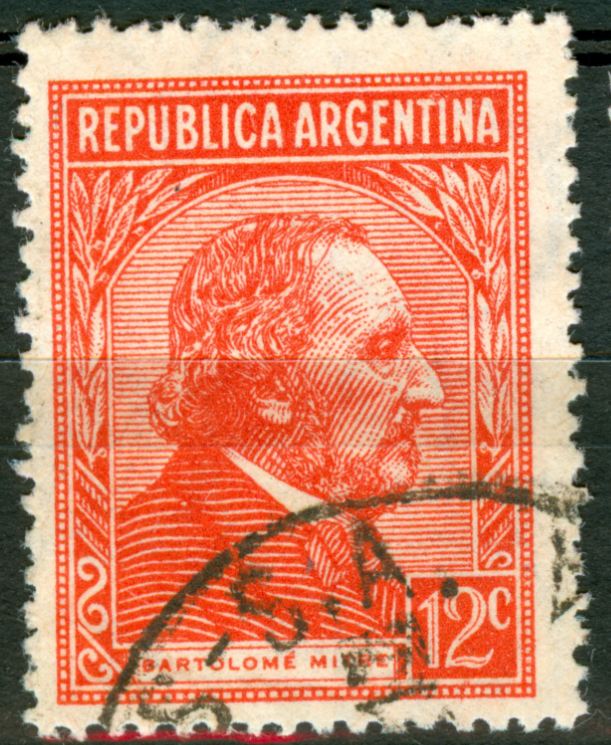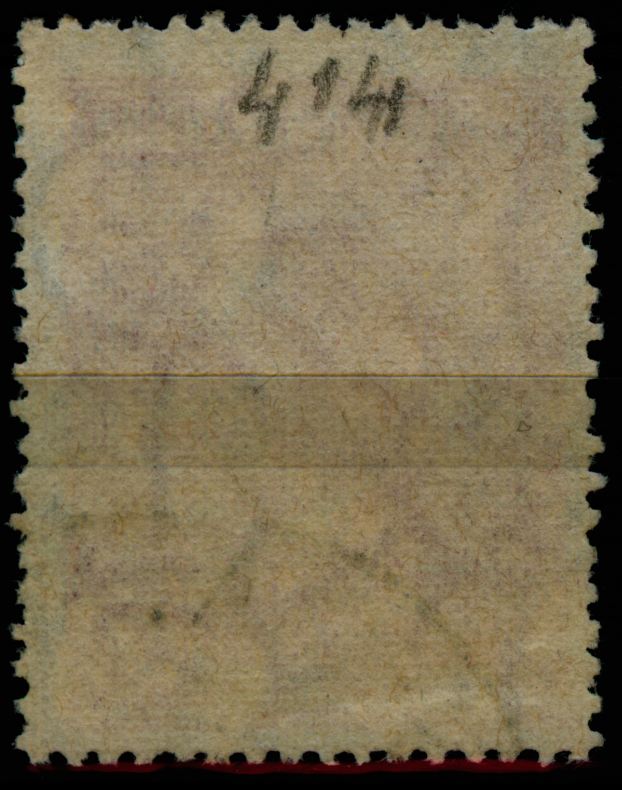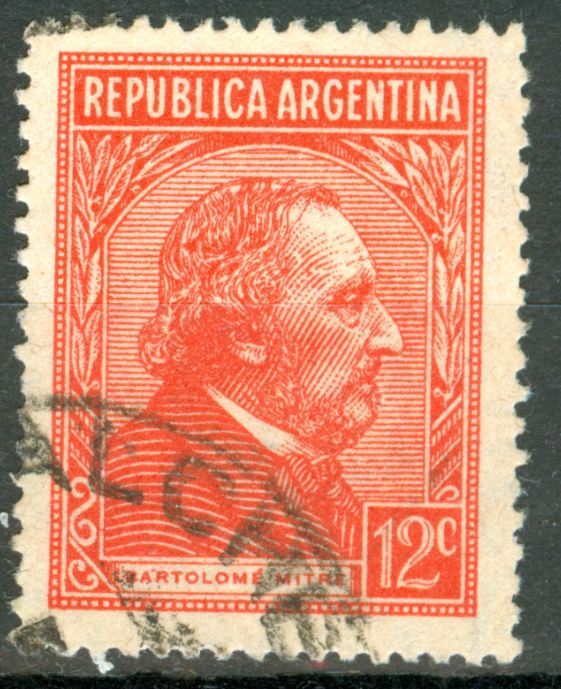
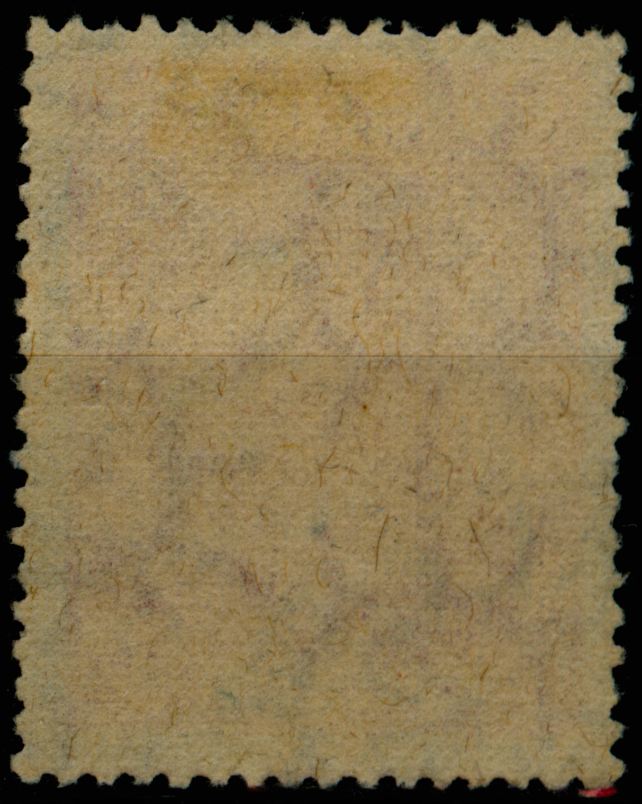
This is the 12c Bartolomé Mitre in offset-litho, vermillion on Wiggins Teape paper with a parallel watermark and a symmetrical paper mesh! Density 24/22 AKA "Tela"!
to be continued....
Moderador: Rein




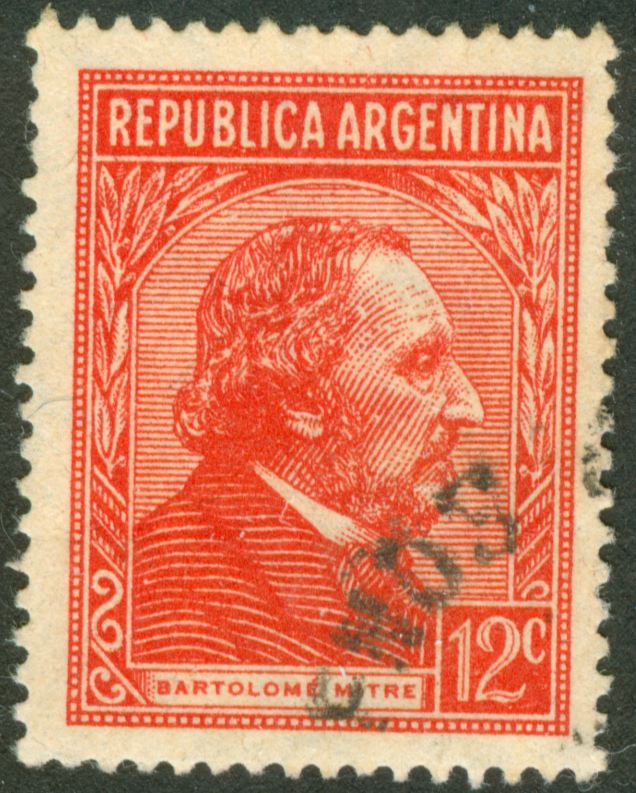
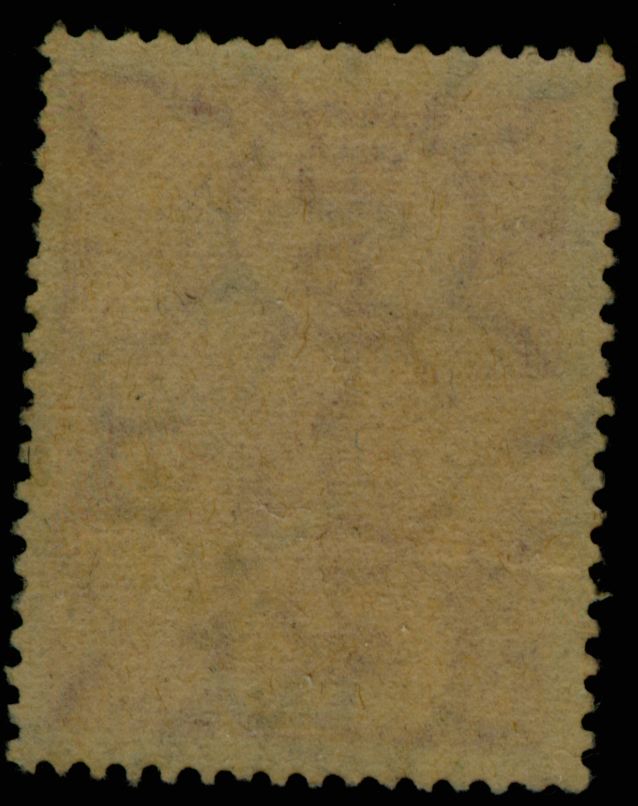
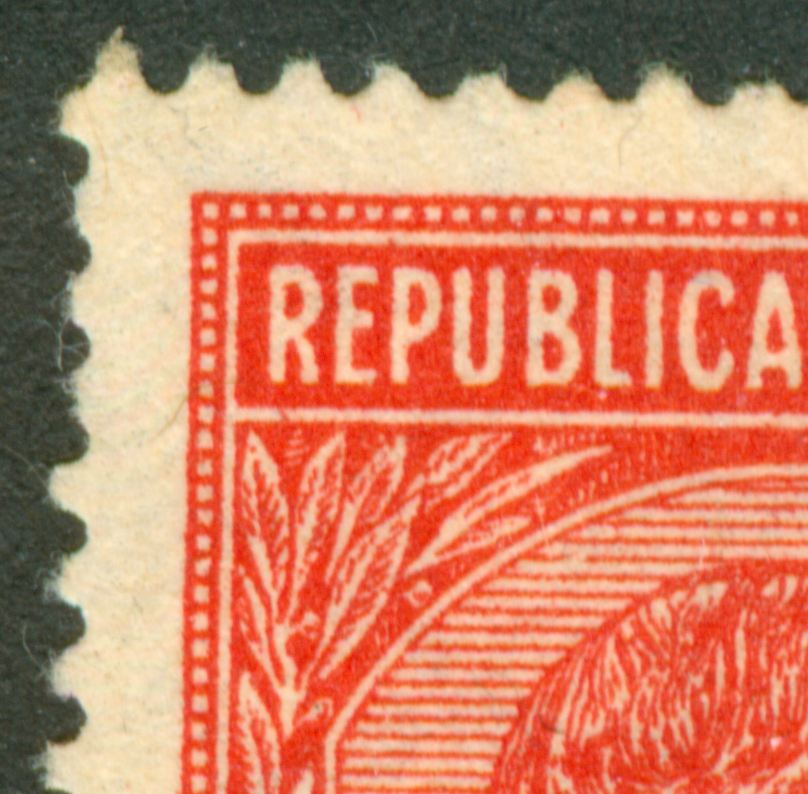


saludos, ReinThe Argentina 1921 Postal Congress stamps!
5c:
In the other corner a lot more grooves can be spotted although not that long!
This is the Normal paper - Papel Normal - with the wire side and its grooves (surcos) gummed!!!!
to be continued ...
But the printer - or rather the Dutch paper supplier ALPAMIJ had not bothered too much taking care about which side to be gummed!
The extra long grooves can be found both at the back - as in the posting above - and at the front of the stamps!
Again a superlong fiber or hair even!
We have good examples of transposed paper or papel traspuesto here!

Sergio.stamps9407 escribió:Hello I don't have much if this stamp From left to right I have MI1, MI2, MI4 and MI4. (pictures with analysis below)
Question: How I differentiate MI3 from the others (so far MI1 and MI4)?
Question: How I know the direction of paper of MI4 if the lines are 45 deg?
Thanks and regards
Sergio

saludos, ReinThe orthogonal watermark with symmetrical paper wire - Dutch paper papel holandés - direction of paper parallel to the long side of the stamp "M":
But is this the typical Holandés we know of the 1940 P&R I stamps????
10c Rivadavia in offset-litho - Type A: Symmetrical paper mesh, orthogonal watermark, "papel Holandés"

Sorry, this is a typo I mean M1, M1, M4 and M4 (it's OK in that way?)From left to right I have MI1, MI2, MI4 and MI4. (pictures with analysis below)

Sergio!stamps9407 escribió:Sorry, this is a typo I mean M1, M1, M4 and M4 (it's OK in that way?)From left to right I have MI1, MI2, MI4 and MI4. (pictures with analysis below)
Thanks
Sergio

Otin escribió:Rein,
Can you tell me in "my" nomenclature" the meaning of MI1, MI2, MI3, and MI4? Saludos,
JOSÉ

